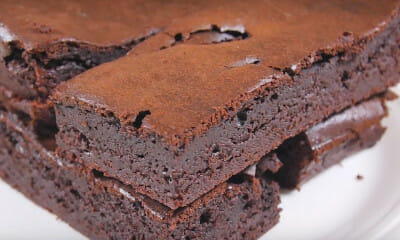Hyaluronic Acid – Benefits, Uses and Side Effects!
If this coronavirus is your generation, you ‘re not alone. Heat, lack of sleep, excessive caffeine, and alcohol and a bad diet will make your skin go away.
The good news is that states are easing industries, including hair and nail salons. Many people will be eager to see their dermatologists as well. Hyaluronic acid is one of the medications many people would try.
What is hyaluronic acid made of?
Despite the name, hyaluronic acid (HA) is not really an acid, but a sugar. This sugar is made naturally in our bodies and has the function to hold water in our skin to keep it soft, supple, and hydrated. It’s found primarily in our skin, eyes, and joints.
Hyaluronic acid also aids in supporting joint health by maintaining hydration and lubrication. Like other physiologic changes that occur with aging, we produce less hyaluronic acid as we get older.
A healthy diet can help! Consuming antioxidant-rich fruits and vegetables such as berries, melon, citrus fruits, green leafy vegetables, broccoli, tomatoes, and other produce reduces inflammation and aids in the retention of HA.
What does hyaluronic acid do to your skin?
Because HA aids in holding water in your skin’s cells, it acts as a powerful moisturizer. In addition, as a component of the extracellular matrix of the skin, it’s important in the metabolism of the outer layer of the skin called the dermis.
You’ll often see it in several of your skin products such as make-up primers, moisturizers, or on its own to be blended with individual moisturizers. HA helps hydrate your skin and minimize the appearance of wrinkles and dark spots, making it appear younger.
It helps to maintain a humid environment for the skin, which aids in healing. Dermatologists advise applying HA to your face prior to moisturizer or makeup to help seal in moisture and smooth the skin’s surface.
Hyaluronic acid injections are also used to aid in plumping up the appearance of the skin to reduce the appearance of wrinkles and fine lines. These fillers go by the trade name of Restylane and may be used in conjunction with botulinum toxin injections as a non-surgical form of facial rejuvenation. Unlike other skincare techniques, HA injections do not require pre-injection skin-testing.
Does hyaluronic acid remove dark spots?
Dark circles under your eyes may be due to dehydration, which is why health experts advise plenty of water. In addition, because HA attracts water, it may help in rehydrating your skin and reducing the look of dark circles.
However, HA alone does not remove dark spots on your skin. Vitamin C is normally added to formulations that aid in reducing or removing dark spots on your skin.
If fine lines and wrinkles are your issues, make sure you use eye serum or cream contains hyaluronic acid that hydrates the most delicate skin on the face.
As an antioxidant, vitamin C protects your skin from the damage of “free radicals”, unstable molecules produced from metabolism, smoking, and pollution that damage our skin. Vitamin C helps to minimize the look of dark spots by brightening your skin.
Research in India suggests that an injection of 15 mg of HA with lidocaine may be safe and useful in reducing dark circles under your eyes. The tradename for one treatment is Volbella. Treatment may last up to 6 months after injection.
Does hyaluronic acid work for joints?
As many people suffer from arthritis and joint pain, they’ll often seek anything for relief. The most common type of arthritis is osteoarthritis (OA), which results from the “wear and tear” of joints due to sports injuries, obesity, and aging.
HA is FDA approved for use during various eye surgeries and knee pain. HA and has been found to be beneficial for knee arthritis.
In a recent systematic review of 17 studies (7 randomized control studies and 10 cohort studies), all research found reduced knee pain from baseline in the intra-articular HA (IA-HA) treatment group during an initial treatment round, and also sustained or improved pain reduction during the ongoing courses of treatment.
One study with the longest follow up used repeated IA-HA injection every 6 months for a little over 2 years (25 months).
HA injections may also be useful in treating TMJ (temporomandibular joint pain), a painful form of osteoarthritis that is often exacerbated by teeth grinding. TMJ can make chewing and even yawn painful due to the limited ability to open your mouth.
In a recent study comparing arthrocentesis/lavage alone with arthrocentesis/lavage and injected hyaluronic acid, both treatments were found to reduce reported pain and improve jaw function from baseline but did not reduce TMJ sounds.
Does hyaluronic acid grow hair?
Hair growth is another area of interest with the use of HA. Compounds produced by the body called Glycosaminoglycans (GAGs) made up of multiple molecules of sugars, have an important role in the maintenance and regeneration of skin such as wound repair.
HA is part of the GAG molecule. A study published in the International Journal of Molecular Science reported that human hair follicles could be grown (ex vivo) using a GAG complex that imitates the dermal matrix.
Scientists believe GAGs may work by signaling specific targets in the skin and expressing stem cell markers in the hair follicle growth cycle.
Scientists are also looking at the use of HA in the use of hair follicle reconstruction. Postnatal human dermal papilla cells were used in combination with skin epidermal keratinocytes to create an artificial hair follicle germ.
In 2 different protocols, mixed hair follicles, germ-like compounds showed the start of activation and expression of markers of hair follicles. HA in combination with other organic compounds showed promise in hair follicle reproduction in vitro.
What are the side effects of hyaluronic acid?
Like other skin treatments, HA may have side effects. Some side effects include skin necrosis (premature cell death), visual loss, and other complications.
A case report in Ophthalmic Plastic Reconstruction Surgery reported rare blindness in the eye of a patient receiving injections of HA. Although this is a rare side effect, it should be noted prior to receiving injections of HA in the orbital area.
A systematic review of uses of HA in a variety of medical treatments including osteoarthritis, ophthalmic procedures due to its lubricating properties and skincare/improvement has found it be effective with minimal side effects.
Scientists note more research is needed in the area of liver disease, pharmaceuticals, and tumor markers are needed.
HA supplements have been touted for use for urinary tract infections, vaginal pain, aging, and other conditions, but solid research does not support it in these cases.
Discuss the use of HA with your physician or dermatologist if you’re interested in learning more about this interesting “sugar”.
























